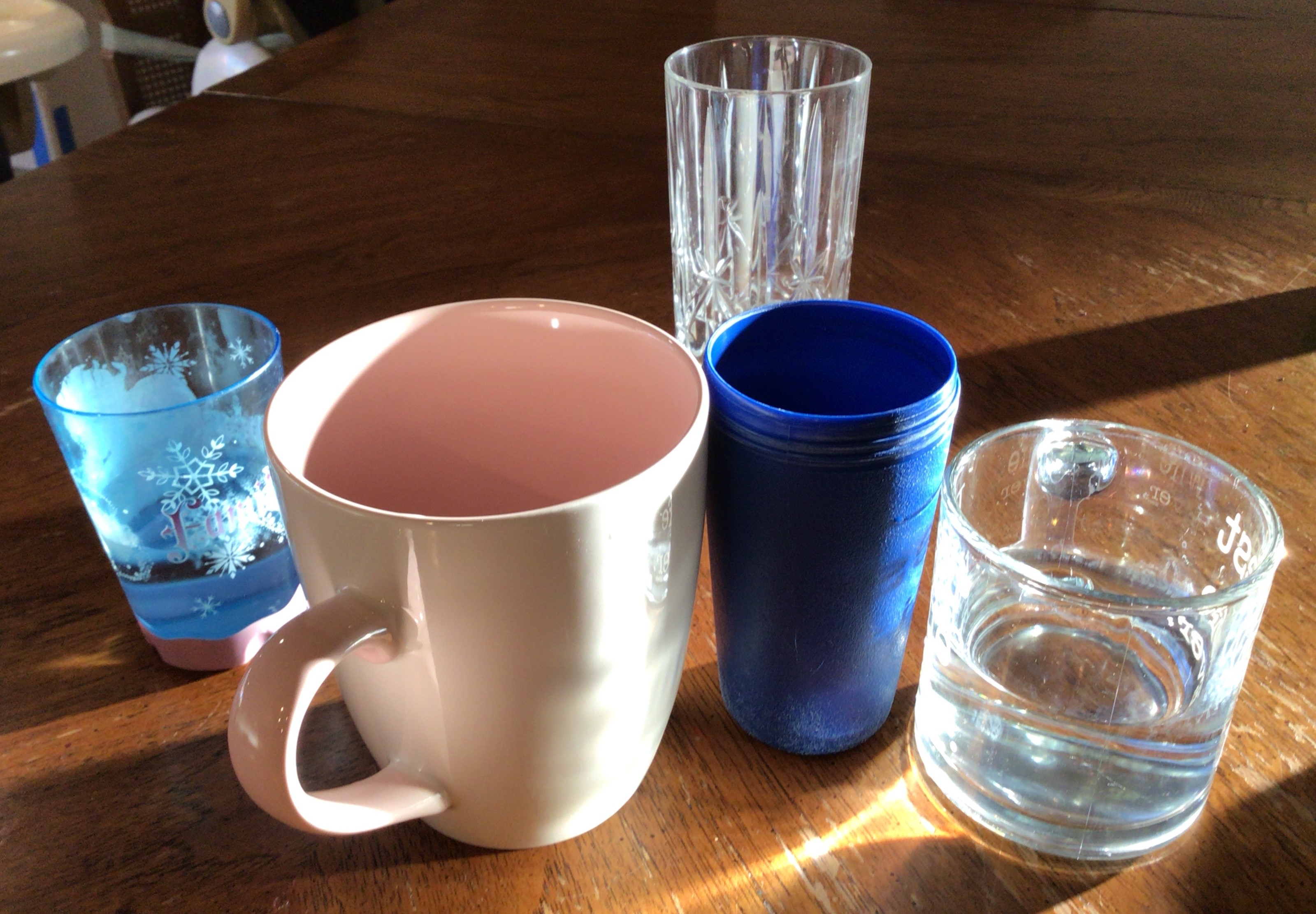Or search by topic
Number and algebra
Geometry and measure
Probability and statistics
Working mathematically
Advanced mathematics
For younger learners
Compare the Cups



- Problem
- Getting Started
- Student Solutions
- Teachers' Resources
Thank you to everybody who sent in their solutions for this activity. Chloe from Mound Elementary School in the USA sent us this picture of some cups to compare:

Chloe said:
In order for me to find out which cup has more water, I need to write down the answer to each cup on a piece of paper.
I wonder what Chloe means by 'the answer'?
Caolan from Knockloughrim in Northern Ireland sent in these ideas:
If I wanted to drink a lot, I would:
Choose the cup which could hold the most capacity, as one might be fatter and one might be taller.
If I didn't want a lot to drink, I would:
Choose the cup that holds the least capacity. I would choose the cup that looks the shortest and slimmest as well as testing the capacity.
How would I arrange the cups from most liquid that could fill it, and how could I prove that I'm right? I wouldn't arrange them by looking at them and roughly judging the biggest, but I would test, using a measuring jug, how much capacity it holds. I would prove this using the measuring jug as it would be accurate.
Caolan makes an interesting point about the different shapes of cup we can find - some cups can be 'fatter' while others can be 'taller'. I wonder how accurately we can tell which cup is bigger just by looking at them?
You may also like
Let's Investigate Triangles
Vincent and Tara are making triangles with the class construction set. They have a pile of strips of different lengths. How many different triangles can they make?

